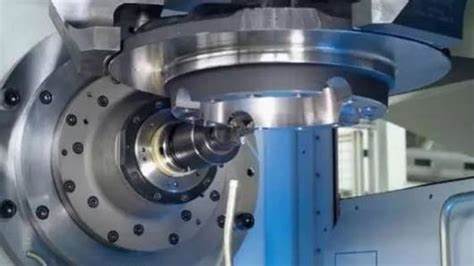After machining processes such as milling and stamping, metal products can be left with small ridges or protrusions called burrs. Deburring through different types of burrs with these imperfections is essential to ensure a smooth and reliable part.
Fortunately, many methods of deburring can be used in different parts and for specific applications. The correct process depends on the type of metal, its coatings, and desired quality levels for your final product.
Safety
Deburring is a necessary process that keeps machinery, tools, and parts smooth and safe for employees. This is because sharp edges can cause injuries or damage equipment and machinery, resulting in extra time and expense to fix the problem.
Burrs are ridges or sharp edges that appear when cold or hot machining operations are performed on metal. They are unsightly and may reduce the functionality of a part. They also affect the safety of people who handle and transport the part.
In addition, a burr may interfere with the correct placement of plugs and thread gages during the machining process. This can result in erroneous measurements that the manufacturer could reject.
Another safety hazard is the possibility of the blades on a deburring tool becoming sharp or breaking, which could expose workers to serious injury. Because of this, it is essential to change the blades on a deburring device as infrequently as possible.
Some deburring processes require a lot of physical labor, which can slow down the manufacturing process and increase the cost of production. However, automated deburring methods reduce the amount of manual work and can help you achieve smoother, more consistent results. Using automated machines also eliminates the risk of human error and ensures that all your parts are deburred correctly.
Quality
When metal is shaped through processes like machining, stamping, or welding, it often produces small ridges or protrusions of metal known as burrs. These imperfections are usually not noticeable when the workpiece is in its final state, but they can cause severe problems if left in place.
Deburring removes burrs from a finished part after machining or welding to produce a smooth surface. It’s essential to the quality of any machined or welded piece.
In many manufacturing industries, deburring is an integral part of the production. It is a crucial safety measure for workers, operators, and consumers, as it can prevent injuries when working with rough-edged materials or components.
The purpose of deburring is to produce a smooth, reliable metal part that can be used in any application. It also helps to prevent defective parts that could be dangerous for consumers, workers, and equipment.
There are many different deburring methods and technologies to choose from, each with its advantages and disadvantages. The best way to find the right deburring solution for your business is to talk to an expert about your metal fabrication needs and the type of deburring machine that will work well for you.
Efficiency
Deburring machines can help increase a shop’s efficiency by speeding up the machining process, reducing downtime, and limiting rework. They also can reduce injury risks and produce higher-quality finishes.
Most shops use various types of machines in their deburring lineup, so choosing the device that will meet your specific needs is essential. Ultimately, what’s best for you will depend on the size and complexity of your parts.
Some shops may only need to deburr the edges of a small number of parts so that a simple belt sander can do the job perfectly. However, if your business produces metal parts with cladding, zinc, or laser film surface coatings, you’ll likely need a multi-directional brush machine.
The rotary brush can save you time and money by uniformly deburring and finishing the edges of metal parts in a single pass. These brush machines are relatively harmless to metal surface coatings, allowing you to improve your deburring capabilities without sacrificing the quality of your finished product.
Using manual hand grinding to deburr metal parts can lead to numerous issues, including varying finishes for each piece and slowing the production process. Additionally, it can be unsafe for operators because it can lead to repetitive motion injuries.
Aside from the safety risks associated with manual grinding, workers can also develop white finger syndrome, which causes damage to nerves that regulate blood flow in the fingers. This condition can cause red or white discoloration and permanent numbness and pain.
Cost
Deburring is a necessary part of the machining process. The processes used to shape a piece of metal, such as stamping and milling, can sometimes leave small protrusions or ridges in the finished product that compromise its quality if not removed.
This thorny, snag-prone problem can be expensive and time-consuming to address. Removing these burrs can save a company money in the long run and make production more accessible and safer.
Fortunately, a few different methods can be used to remove these thorns. They all involve using various tools and machines to help remove the burrs and smooth out the rough edges of the workpiece.
The proper technique is key to achieving the best results and should be tailored to your specific needs. This will ensure you don’t waste time or money on equipment that doesn’t meet your requirements.
One way to achieve better results is by investing in an automated deburring machine that can handle multiple parts simultaneously. This reduces labor costs and increases consistency, so your employees can focus more on other aspects of the manufacturing process. It also prevents mistakes from happening, which can harm your company’s productivity.

